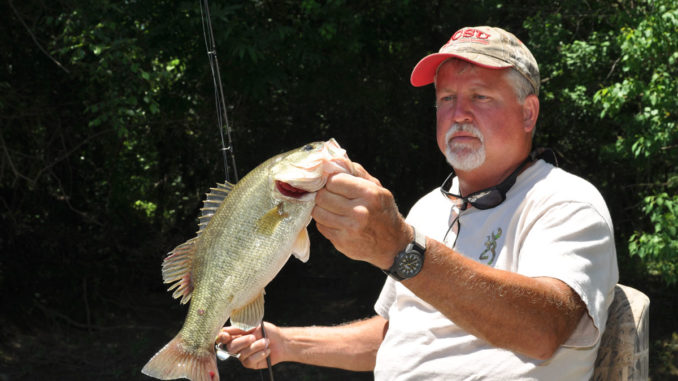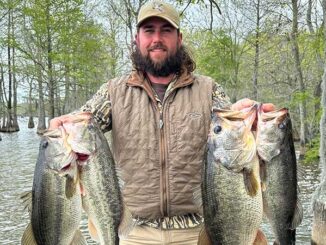
Neuse river bass finally recovering after many down years
Hurricanes have affected largemouth bass in many North Carolina rivers, especially the Neuse River near Kinston.
Catching 30 to 50 bass a day once was relatively easy, before hurricanes and the resulting flooding damaged the fishery. But now, the Neuse is beginning to recover.
“Even if you knew nothing, you could catch 25 bass a day — sometimes 50,” said Danny Joe Humphrey, a veteran bass fisherman from Kinston. “And it used to take 25 pounds (five fish) to win a tournament. Today you can know everything and not catch one 5-pounder. But it’s getting better.”
Humphrey said Hurricane Floyd (1987), Fran (1996) and Dennis (1999) nearly wiped out the Neuse River’s bass population.
“It wasn’t drowned cattle, pigs, oil and pesticides, but huge areas of dead, no-oxygen water that got pushed out of the swamps and swept down river,” he said. “It was a wave of death that smothered bass.”
But Humphrey said fish from farm ponds — or escaped from the Walnut Creek lakes in Goldsboro after hurricane waters breached the dam — helped re-populate the river, before Hurricane Irene wiped bass out again in 2011.
Anglers continued to chase Neuse bass with limited success.
“Then we had two or three consecutive wet winters, fewer people fished and fish numbers and sizes grew,” Humphrey said.
In the summer of 2014, angler Lee Lanier discovered millions of red crayfish in the drainage ditches that join the river. Red crayfish, Procamberus clarkii are common to the southeast. They can burrow in wet swamp bottoms to survive dry spells and walk for miles on land. Humphrey said to crayfish, three wet years before 2015 were similar to pouring water on a dormant seed bed.
“So fishing blew up in 2015 because of the red crayfish,” Humphrey said. “Everybody was catching big numbers of bass and bigger fish.
“Before the crayfish explosion, the river was full of 11-inch bass, but the crayfish set them on fire. Bass grew fast for three years and now are fat on crayfish.”
Lanier wisely bought dozens of spinnerbaits with red/white skirts.
“I figured that red color looks like a crawfish, and I’ve hammered bass ever since when the river’s low or dropping,” he said.
Aquatic grasses are also growing again in the Neuse because it hasn’t been washed downstream or buried by siltation caused by hurricanes.
“The water’s been clearer, too, which helps people see fish, and the new grass is helping because it gives cover to baitfish and bass,” Humphrey said. “In fact, New Bern is the favorite destination for tournament anglers because grass is now in the Neuse and Trent rivers.”




